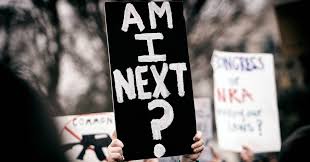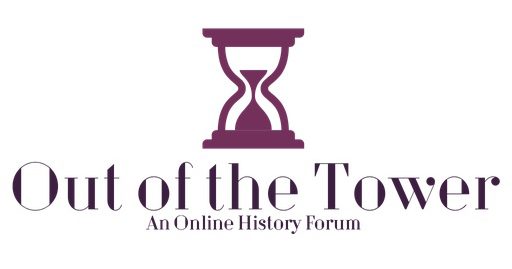
“A well regulated militia, being necessary to the security of a free State, the right of the people to keep and bear Arms, shall not be infringed.” How did a once inconsequential, dismissed, and somewhat forgotten, sliver of the United States Constitution become such a hotbed of political strife and the source of overwhelming, mass violence? In Repeal the Second Amendment: The Case for a Safer America, Allan Lichtman, a distinguished professor of history at American University, draws upon a wealth of source material and meticulous historical research to explain how the National Rifle Association (NRA) has hijacked the history of the Second Amendment. In an effort to convince gun control advocates that they must pursue the repeal of the Second Amendment, Lichtman probes the history of firearms and gun regulations from colonial times to the present to detail the ways in which the NRA has manufactured a distorted history of gun ownership in America. Lichtman argues that the “iron triangle” of the gun lobby, the gun industry, and an array of pro-gun (mostly Republican) politicians have used a twisted and misleading history of the Second Amendment to advance their own interests, and enrich their pockets, while entrapping Americans into an endless cycle of gun violence.[1] To solve American’s gun violence problem, Lichtman concludes, the Second Amendment must be repealed.
In Lichtman’s view, gun control advocates have been fighting a losing battle because they have fallen too eagerly into a defensive position that attempts to support the Second Amendment as a measure protecting a private right to own guns while also advocating for effective gun control measures. “By playing not to lose,” Lichtman explains, “the gun control movement has been losing. It wins only by becoming as bold and uncompromising as the gun lobby.”[2] As Lichtman contends, it is time for gun control reformers to inspire a different political reality and set the terms for a fresh debate regarding gun violence and responsible gun ownership in America. That debate begins by recapturing the more accurate but, nonetheless, neglected history of the Second Amendment.

Since the late twentieth century to now, the NRA has exploited a historically flawed and deceptive interpretation of the Second Amendment to motivate grassroots supporters of private gun ownership, boost the gun industry, and to provide a disingenuous constitutional argument against efficient government regulation of firearms. But, Lichtman maintains, Americans actually possess quite a long history of living with a Second Amendment that had practically no effect on an individual’s ability to own guns.[3] In regard to the Second Amendment, the concerns of the framers of the Constitution had little to do with protecting a private individual right to keep and bear arms. In reality, America’s founders were more preoccupied with ensuring that a militia, composed of citizens who were part-time soldiers, could supplement the demands of a standing army. The need to balance the responsibilities of a standing army—an army made up of professional, full-time soldiers—developed from the fear that a standing army with significant military authority could pose an existential threat to the ideas of liberty upon which the republic had been founded. The framers, then, intended for their new republic to rely on a two-tiered military system: a standing army, which would be limited in its abilities, in addition to a well-regulated, organized citizens’ militia force, which could be used to suppress internal rebellions.[4]
In the years after the War of 1812, the once well-organized and controlled militia fell into disrepair, as the government had placed its trust more heavily on a regular military force, which was complemented by conscripts and volunteers for military service. And, for a time, the significance of the Second Amendment diminished from view as the importance of America’s well-regulated citizens’ militia faded.[5] Before the Supreme Court’s landmark decision in District of Columbia v. Heller (2008), courts had generally ruled that the right of individual citizens to bear arms subsisted only within the context of participating in the government’s well-regulated militia. Even the NRA, which had once been a responsible association for hunters, had understood for a considerable period of time that the Second Amendment more likely applied to a collective, not an individual, right to bear arms.[6] All of that changed, however, after members of the NRA voted in a new militant leadership in the late twentieth century, not coincidentally, as Lichtman details, these changes coincided with the rise of the civil rights era in the 1960s. Since that time, the NRA has evolved into a lobbying firm that has defended gun manufacturers’ interests by attacking any effort to governor the private ownership of firearms.[7]

Despite America’s long history of government and public acceptance of responsible gun control legislation, the Supreme Court’s decision in Heller (2008) upended legal precedent and gave gun rights devotees their biggest legal victory. That decision embraced the individual rights view of the Second Amendment promulgated by the NRA. Because of that ruling, the judiciary can overturn any firearms regulation as unconstitutional. This is especially important now, as there are so many pro-gun justices in the Supreme Court majority. Lichtman argues that gun control advocates must pursue the repeal of the Second Amendment because the Court’s ruling in Heller has entrenched the concocted meaning of the amendment into our society’s legal fabric. Until the Second Amendment is repealed, Lichtman maintains, the NRA and its backers will be able to block any meaningful attempt at establishing gun control legislation by simply appealing to the Court’s ruling in Heller.[8]
A repeal of the Second Amendment, though, will not be a simple endeavor to take on. America’s founders were open to having the Constitution be altered, but they did not want to make it easy to do so. A repeal of the Second Amendment would require an appeal amendment, which would need to be proposed by two-thirds majorities in both houses of Congress and ratified by three-quarters of the states. Again, this will not be an easy task. But, Lichtman has a plan, which he charts in detail in the second part of Repeal the Second Amendment. As Lichtman discusses, the campaign to repeal the Eighteenth Amendment, which established the prohibition of alcohol in the United States, created a guidebook for gun control advocates to follow. The tactics Lichtman outlines include organizing single-issue groups dedicated to repealing the Second Amendment, conducting education campaigns to help the public better understand the amendment’s history and original purpose, as well as enlisting prominent individuals, businesses, and faith leaders to help galvanize the movement.[9] Once the Second Amendment is repealed, Lichtman explains, gun control advocates can move to set up significant reforms not to take away the ability to own guns absolutely, but rather to enforce reliable restrictions and steadfast regulations to make gun ownership more responsible and safer.[10]

Lichtman’s brilliantly thorough and precise research in Repeal the Second Amendment shows how the work of historians, and other scholars, can engage a wider stream of audiences and guide public debate towards a more productive pathway for inciting essential change. In 2019 alone there were 418 mass-shooting incidents and almost 40,000 deaths related to gun violence.[11] That madness needs to stop. The lunacy around the historically inaccurate and deceitfully contrived notion of an absolute, ungovernable private right to keep and bear any and all firearms needs to stop. As Lichtman persuasively argues, the insidious gun violence crisis that has plagued the United States can only be attended to once gun control reformers reclaim the Second Amendment’s history and move towards the amendment’s repeal.
~Rebecca DeWolf, PhD
[1]. Allan Lichtman, Repeal the Second Amendment, The Case for a Safer America (New York: St. Martin’s Press, 2020), 218-219.
[2]. Ibid., 219 .
[3]. Ibid., 178.
[4]. Ibid., 42-43.
[5]. Ibid., 69-70 .
[6]. Ibid, 83-86, 107-108.
[7]. Ibid., 106-109, 115-127.
[8]. Ibid., 140-146.
[9]. Ibid., 227-230.
[10]. Lichtman details an array of possible gun reform measures including, federal permits, a national red flag law, requiring safe storage of firearms, purchasing limitations, and stronger background checks. See Lichtman, Repeal the Second Amendment, chapter 14.
[11]. “Past Summary Ledgers,” Gun Violence Archive, https://www.gunviolencearchive.org/past-tolls, accessed 29 February 2020.
